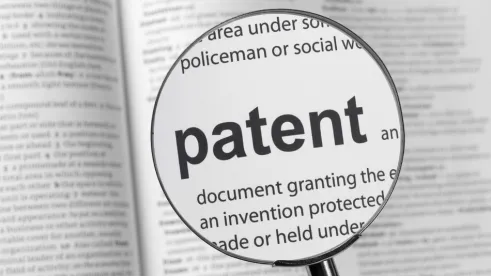A panel of the US Court of Appeals for the Federal Circuit found claims directed to methods of identifying and detecting a biomarker to be directed to patent-ineligible natural law, affirming a district court decision while noting the supremacy of its case law over US Patent and Trademark Office (PTO) guidance. Cleveland Clinic Foundation v. True Health Diagnostics LLC, Case No. 18-1218 (Fed. Cir. Apr. 1, 2019) (Lourie, J).
The patents in suit issued from continuation applications claiming priority from a parent patent previously held to be patent-ineligible in Cleveland Clinic I (IP Update, Vol. 20, No. 8). The parent patent claimed a method of assessing cardiovascular risk from blood biomarker myeloperoxidase (MPO). The claims at issue, by contrast, recited methods of identifying and detecting MPO. Based on the Cleveland Clinic I decision, the district court found the claims at issue patent-ineligible and dismissed Cleveland Clinic’s complaint in the context of deciding a Rule 12(b)(6) motion. Cleveland Clinic appealed.
On appeal, the Federal Circuit panel agreed with the district court, stating that the “rephrasing of the claims does not make them less directed to a natural law.” According to the Court, the claims recited applying known methods to detect MPO levels, comparing the levels to a control and deciding whether the MPO levels are elevated. The resulting conclusion “is simply another articulation of the natural law that blood MPO levels correlate with” cardiovascular risk. The Court rejected Cleveland Clinic’s argument that the correlation is not a natural law because it can only be detected using certain techniques. Laws of nature exist regardless of the techniques used to detect them: “[i]nadequate measures of detection do not render a natural law any less natural.”
The Federal Circuit also found the claims to not be limited by an inventive concept, explaining that the specification and prosecution history concede that the claimed methods use a known technique in a standard way to observe a natural law.
As for Cleveland Clinic’s contention that the district court failed to give appropriate deference to patent eligibility guidance provided by the PTO, the Federal Circuit offered that while it greatly respected the PTO’s expertise on patentability, it was “not bound by its guidance.” Rather, case law should be applied consistently. As the Court explained, notwithstanding that the exemplary claim identified in the PTO guidance is “strikingly similar” to a claim found patent-ineligible in Ariosa, “Ariosa must control.”
Practice Note: While PTO guidance is useful, especially in the context of prosecution, practitioners should not assume, especially in the context of enforcement actions, that a claim similar to one designated as patent eligible in the PTO guidance will survive a § 101 challenge; case law controls.




 />i
/>i
